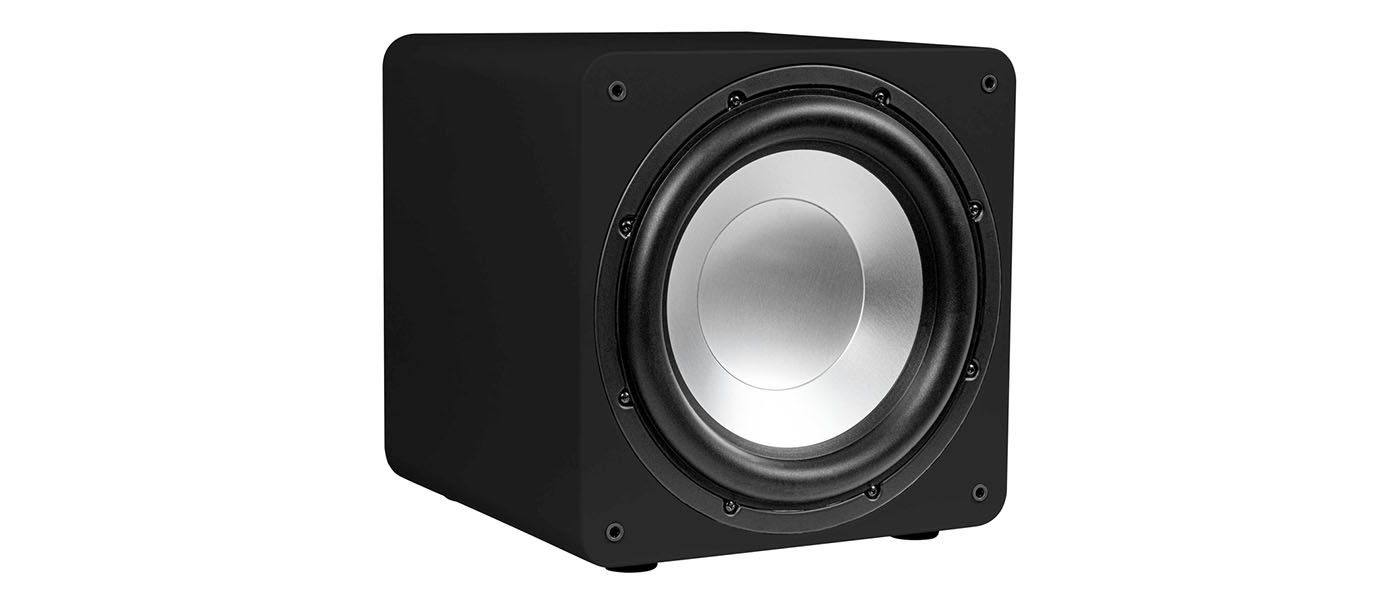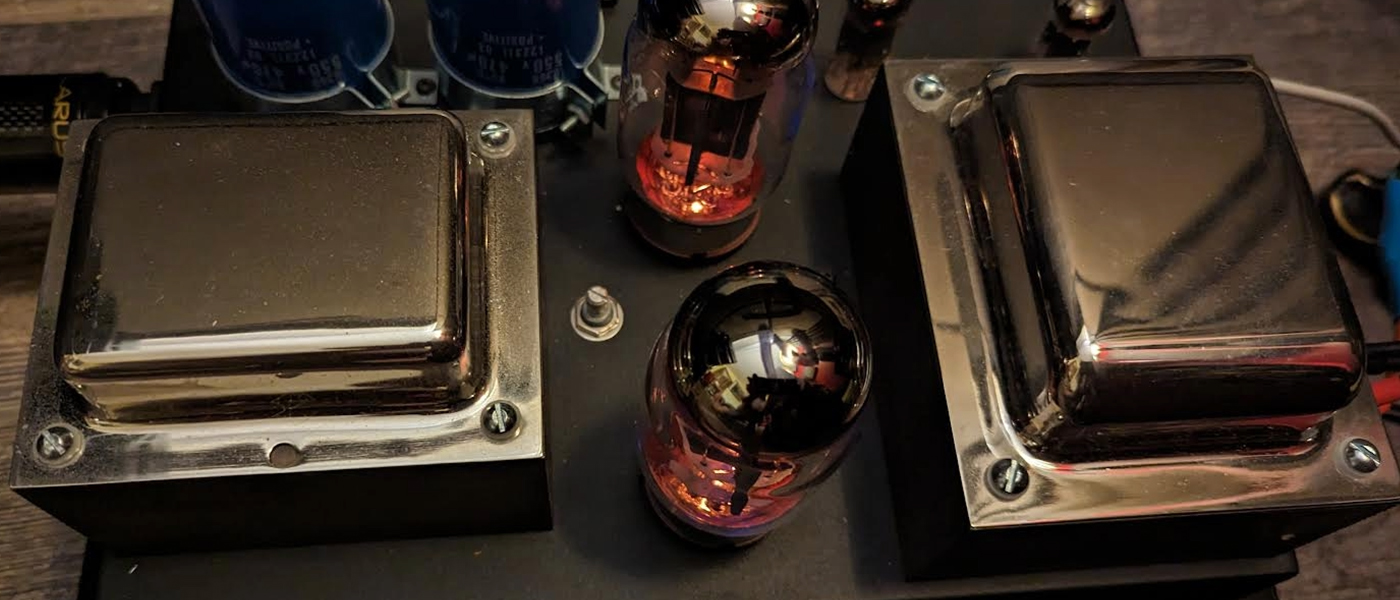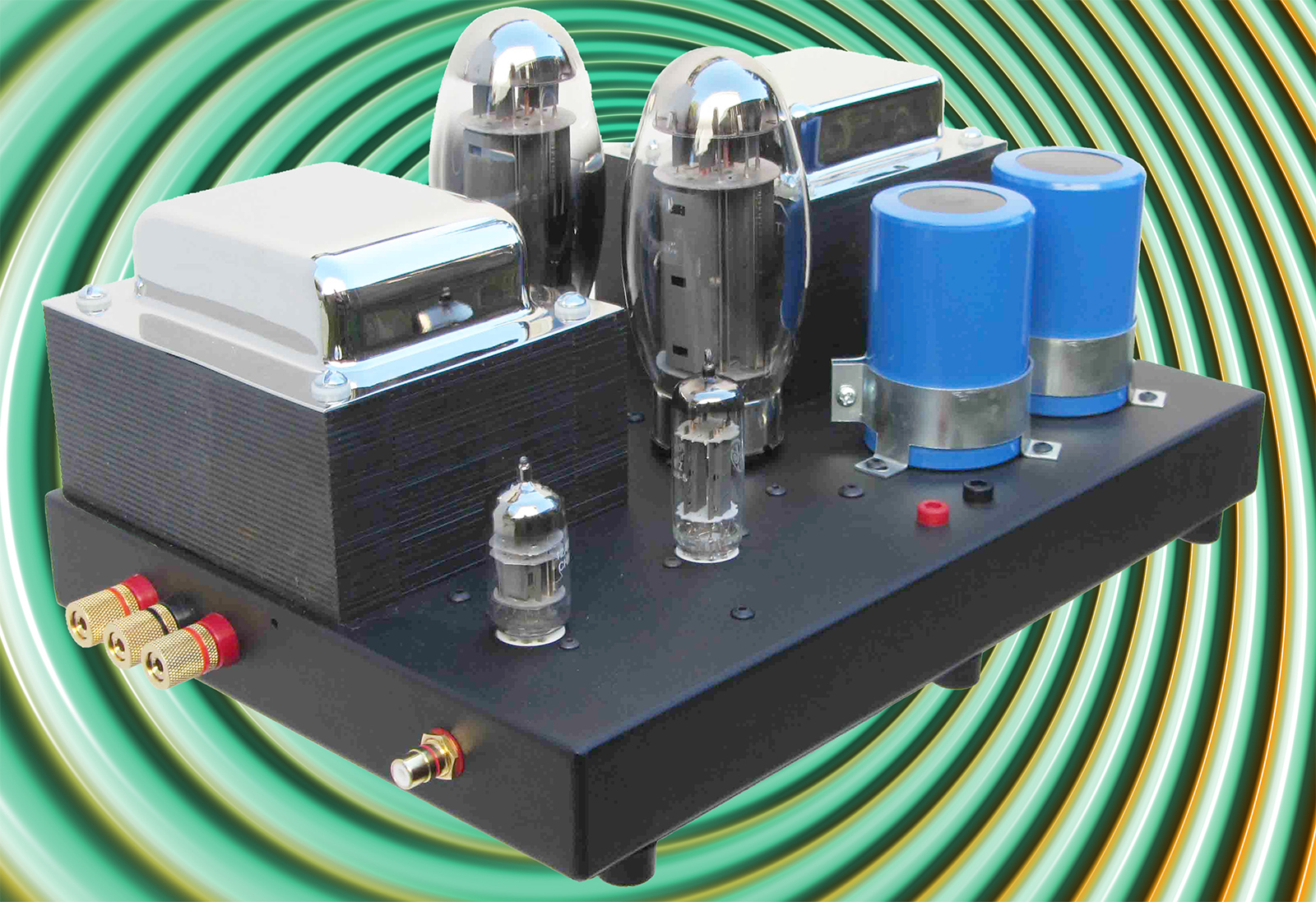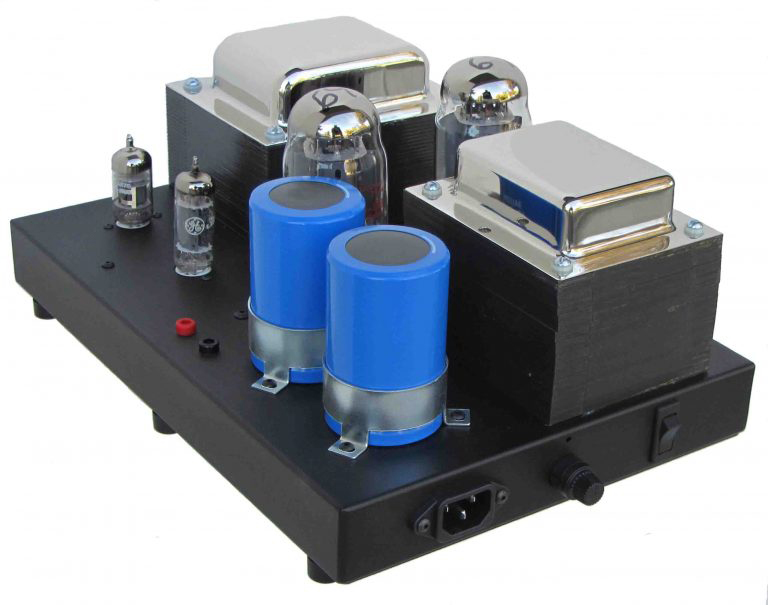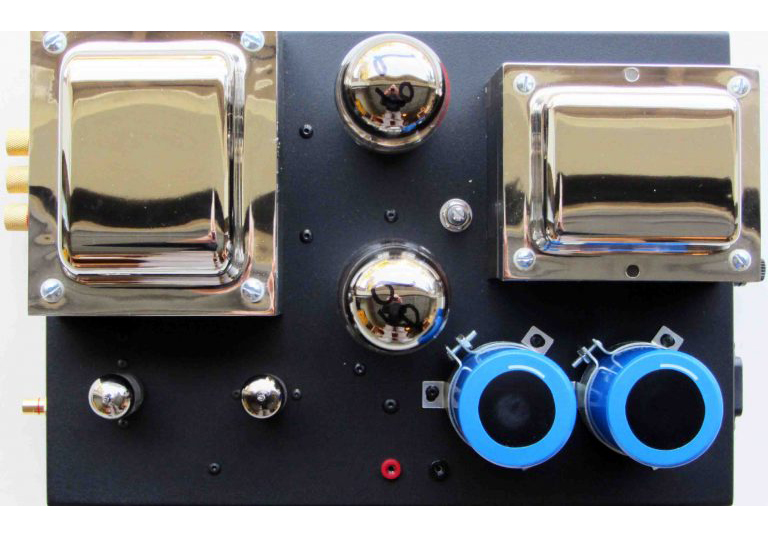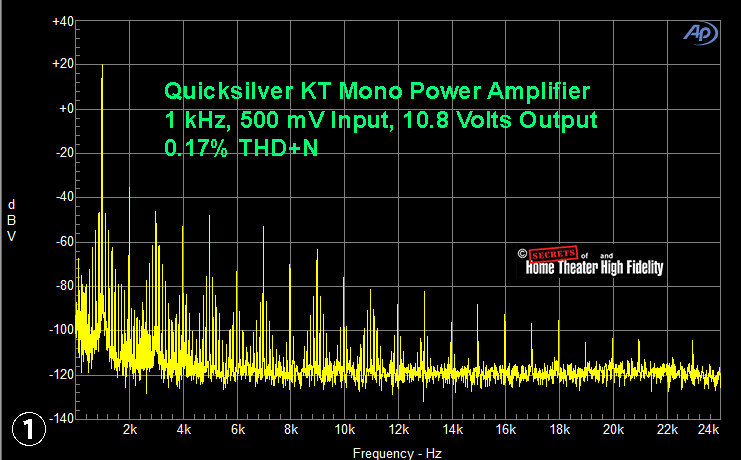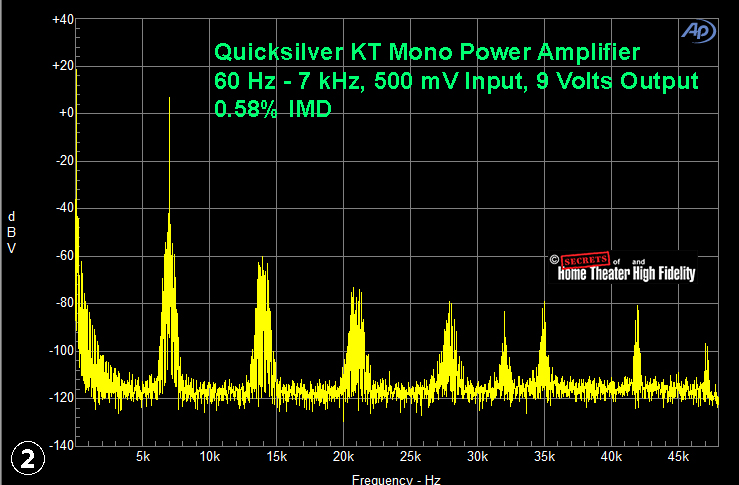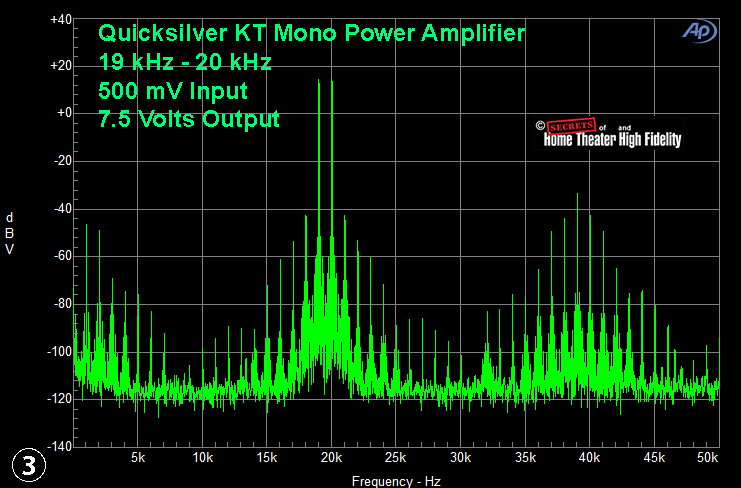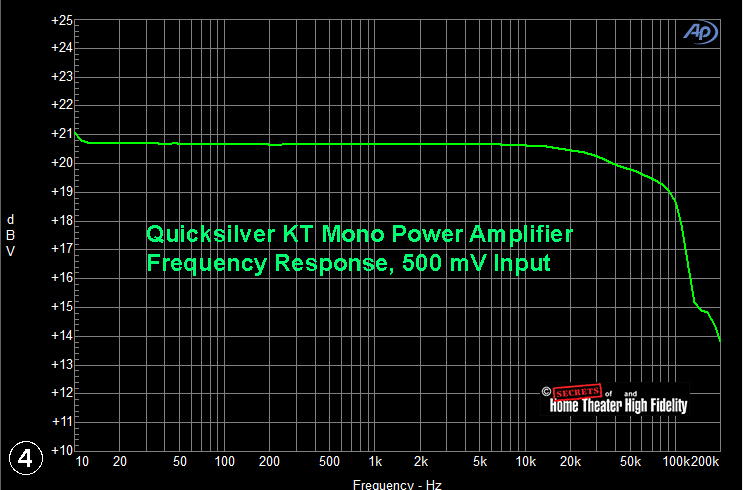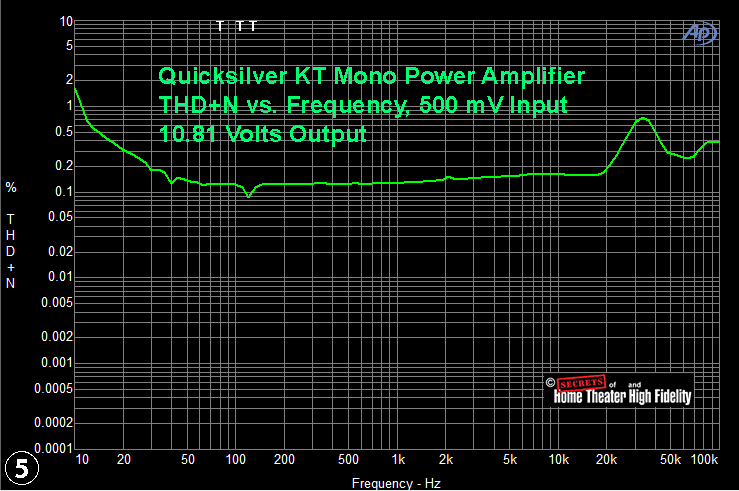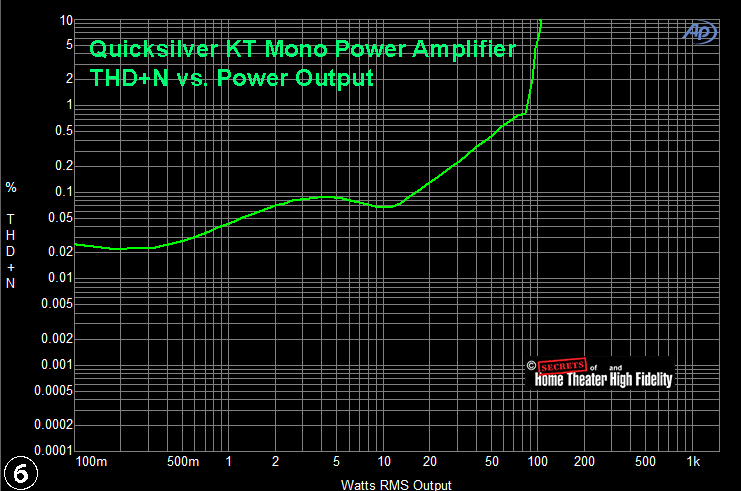I have had many of their amplifiers and preamplifiers over the past 30 years and I have to say that this current design seems to pull the best from the many designs I have had from Quicksilver Audio and merged many of their positive traits into this one. The Quicksilver KT Mono amplifiers were a joy to listen to, and reminded me of how much they have retained that historical Quicksilver “sound” yet still sound more modern with their neutral presentation.
The Quicksilver KT Mono amplifiers have the “Quicksilver historical DNA” but have taken on more neutrality than the many Quicksilver amplifiers I have owned over the years. From a musical perspective, the Quicksilver KT Mono amplifiers were very rewarding while reproducing Jazz, Classical, Bluegrass, Blues, and Rock and Roll. Quicksilver Audio has been innovative with different circuits for many years, and the Quicksilver Audio KT Mono amplifiers continue this trait.
These amplifiers were a joy to use, musically delightful, and I am still discovering new facets of their musical reproduction.
Quicksilver KT Mono Tube Amplifier
- Quicksilver KT Mono Amplifiers have a compact size and a small footprint.
- Beautiful Chrome Transformer Covers.
- Top Quality “Made in America” Components.
- No need for Balanced Cables.
- Point-to-Point Wiring.
- No Circuit Boards.
- Short Signal Path, Minimal-Circuitry Design.
- The “Boogie Factor” was present with all types of music.
- Multiple Input/Output Tube Options.
I have been a Quicksilver Audio junkie for years. Ever since meeting Greg Belemjian, owner of Musical Images, in Fresno, CA, Quicksilver Audio and Vandersteen were the first high-end audio equipment pieces I was able to listen to for extended periods of time. Greg loved Quicksilver and Vandersteen as they were both local, small business owners in the “Midwest” of California, known as the Central Valley, where 25% of the country’s food is produced on 1% of US farmland. Ironically, despite various economic challenges over the past 40 years, Quicksilver Audio and Vandersteen Audio are both “Mom and Pop” audio survivors.
Quicksilver Audio has been a word-of-mouth company since the early MS-190 amplifiers were released by Mike Sanders in 1981. Mike wanted audiophiles to talk, share, compare (something audiophiles do well), and have sales be generated in this manner. He had enough confidence in the design of his products that outside advertising and reviews were not necessary in his plan. Mike has rarely given equipment for a review, and occasionally, a dealer would loan a product to get reviewed. If a publication wanted to review a piece of gear, they had to buy it, then review it.
For the readers of Secrets of Home Theater and High Fidelity, I have a pair of Quicksilver KT Mono Amplifiers for review, with both KT88 and KT 150 tubes. And for perhaps the first time, a full technical measurement and specification evaluation of the Quicksilver KT Mono amplifiers by John Johnson, Editor-in-Chief Emeritus for Secrets of Home Theater and High Fidelity.
Power output:
80 watts per channel (KT 88), 100 watts per channel into 4 or 8 ohms (KT 150)
Power Bandwidth:
14 Hz to 70 kHz
Damping Factor:
20
Input Sensitivity:
1.2 volts
Input Impedance:
100 Kohm
I.M. Distortion:
< 0.5% at 80wpc
Tube Complement:
(2) KT88, (1) 12AX7, (1) 12BH7 per amplifier
Power Consumption:
100 watts at idle, 240 watts at full power
Dimensions:
6” H, 14.5” L, 9.25” W (higher with KT 150 tubes installed)
Weight:
40 lbs. each
US Warranty:
3 years, parts and labor & 90 days for tubes
MSRP:
$3995/pair with KT88 Tubes
$4675/pair with KT150 Tubes
Website:
Company:
SECRETS Tags:
quicksilver, tubes, amplifiers, mono, kt88, kt150
Secrets Sponsor
The design of the Quicksilver KT Mono is consistent with previous Quicksilver amplifiers I have seen in the past. The Quicksilver KT Mono is a push-pull tube amplifier, with point-to-point wiring implemented, in a traditional RCA, non-balanced fashion. There are 3 binding posts, one black ground, a 4 Ohm and an 8 Ohm gold binding post, with a gold RCA input connector. There are two transformers on top of each chassis, an output and a power transformer. As this is a non-stereo design, there is no shared power transformer.
This is a traditional Mike Sanders design with minimal circuitry, point-to-point wiring, minimal parts used and clever circuit features. Mike has a long tradition of utilizing the shortest path from input to output. The KT Mono is a true minimalist design with very high-quality parts used. The amplifiers remind me in some ways of the Silver 90 monoblock amplifiers I had from him years ago.
Under the hood, these do look different than the Silver 90, however. These amplifiers are all about the transformers, as was the Silver 90 and the input stage appears similar to the Silver 90’s too. The signal enters the RCA input, then into the 12AX7, with Mullard CV4004, then into his custom Quicksilver Audio capacitors, 0.27uf, 400VDC, and finally into the Gold Electro Harmonic 12BH7.
The transformer is similar in appearance to the previously manufactured Quicksilver Silver 90, as it has a bifilar wound transformer, two transformer leads for the 4, 8, and ground. This requires a very exact transformer construction. This is not something you will find in bubble wrap at your local electronics store or on eBay. The only other company I am aware of using bi-filar wound transformers is McIntosh with their MC 275, and perhaps other models. The Quicksilver KT Mono is a unique design, however. Mike uses (1) 12AX7, (1) 12BH7 on the input to get the voltage where he wants it. The McIntosh uses (3) 12AX7, (4) 12AT7 tubes in their design to get the voltage where they want it. Both are just different ways of achieving their goals. Both amplifiers are very musical to my ears. Keep in mind, though, the KT Mono amplifiers are not stereo, so ultimately, there are (2) 12AX7 and (2) 12BH7 tubes used as a total count, and 4 KT88 tubes. Fewer tubes (3) than an MC 275, but the same number of output tubes, and a similar power output.
Unpacking the Quicksilver KT Mono amplifiers was not very difficult, as they are individually boxed, making removal much easier. The amplifiers are not too heavy, the packing material is generous, and the amplifiers are well protected. The tubes are in individual boxes with the amplifier, and the power cords are packed in the same box.
My system remains unchanged, with my Pass XP20 preamplifier, Acoustic Zen Crescendo MK II loudspeakers, (review in the future) Luxman DA/06 DAC, WiiM Streamer, Qobuz, (a catalog of over 100 million tracks), Synergistic Cables for digital streamer, interconnects, and speaker cables. IsoAcoustic pads under all components (except the Quicksilver Audio KT Mono) and speakers. A dedicated line (10 awg, solid copper wire) with Audio Power conditioning, dual Tesla batteries, running at 124.1-124.3V AC, stock power cords, and the same Clarus Audio Crimson and source power cords I have used in the past were utilized. AC outlets with the dedicated line are the Audioquest Silver Rhodium outlets.
I also used some old-school vintage equipment in the mix just to compare with our past. I used the McIntosh MC250 50wpc stereo amplifier, McIntosh MC2125 120wpc amplifier, with the C28 McIntosh preamplifier, both completely restored and meeting factory specifications, to see how the Quicksilver stacks up with vintage gear. I really like things about all three of the Mac pieces of gear, but it was quickly obvious that the vintage Mac gear lacked the ultimate resolution of the new Quicksilver KT Mono. They did, however, have their vintage tonal beauty.
The Quicksilver KT Mono amplifiers can utilize numerous types of output tubes. However, I will only be reviewing the KT88 output tubes most of the time, which are factory issue. They are the Electron Tube KT 88-98, Made in China. The other option I have is the Russian Tung Sol KT 150 when trying the demanding load of the B&W 801 Nautilus. The input and driver tubes are the CV4004 12AX7, new production Russian Mullard, and new production Russian Mullard 12BH7.
I did the bulk of the review with the factory tubes, (KT88) and power cords, but I will roll a few 12AX7 vintage tubes including the Amperex 12AX7 Heerlen Factory, “Made in Holland” version, Telefunken Smooth Grey Plate, (not all have access to these tubes so only 10% of listening was with non-factory tubes). I also had to try a GE 7025, Amperex Orange Globe, Herleen Factory, and Valvo Slant Getter, low noise version.
I must say, I have nothing but praise for the Electron KT 88-98 tubes as they were easy to set the voltage, no drifting issues, remained stable after break-in, and were very reliable, quiet, and the most musical tubes I have yet received from China. The Russian tubes, CV 4004 12AX7 and Gold EH 12BH7, were also very reliable, musical, quiet, and inspired confidence in their musicality. I had tried the Russian CV 4004 in other electronics in the past and was mildly impressed. However, the match with the Quicksilver KT Mono Amplifiers is very well executed.
Speaker cable was a mix of custom-made silver/teflon cables, the Acoustic Zen Satori in Shotgun mode, and Synergistic Research Foundation SX speaker cables in bi-wire fashion. The interconnect cables were also Synergistic Foundation SX Cables, custom interconnect cables, and DIY copper, low mass interconnects. The DIY interconnects were V-Quad from VH Audio with KLE Harmony RCA connectors, which are low mass and capacitance designs. I terminated the ends with Cardas Quad Eutectic silver solder. The DIY interconnect cable from VH Audio V-Quad Cu21(4X21) utilizes Unicrystal OCC copper for each of the 4 conductors, and the dielectric is a proprietary form of foamed/cellular Fluoropolymer insulation with a dielectric constant (D.C.) of less than 1.5. The lowest dielectric loss available from any wire I have found. The conductors are arranged in a low capacitance “Star Quad” geometry for a shielding geometry without a physical shield. I have used them for turntable to phono preamp connections and in other areas, with no noise detected. RCA connectors were the WBT GOLD NextGen RCA plugs. Power cables were the wonderful Clarus Audio Crimson.
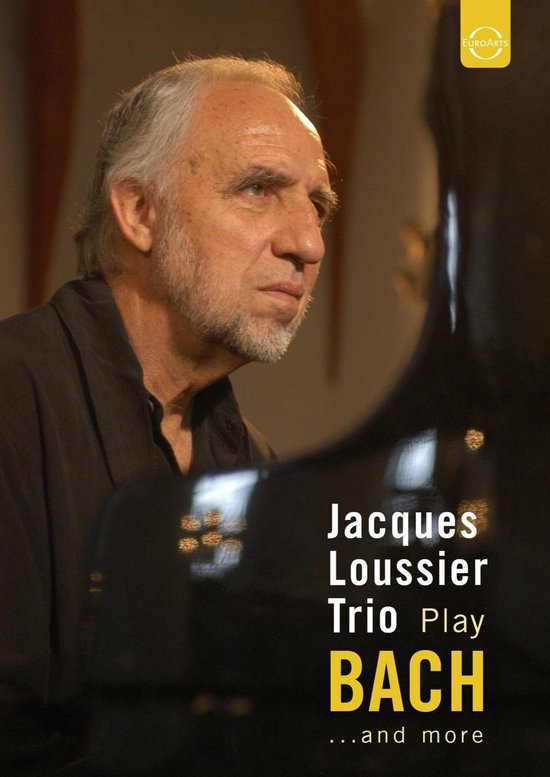
Jacques Loussier Trio, “Play Bach….and more”
First music to play with the Quicksilver KT Mono amplifiers (KT88) was the Jacques Loussier Trio “Play Bach….and more” Live from St Thomas’s Church in Leipzig.
The first song, Fugue No. 5 in D major starts with clapping, which I find very important when evaluating equipment. If the clapping does not have the “flesh” sound, and is more like bacon sizzling in a pan, the music will be compromised. This tells me there is an upper midrange peak and vocals will likely be a bit “hot and thin” so clapping is an important part of my first impression. This recording was very natural, a soft natural sound emerged, with subtle echoing from the walls of the St. Thomas Church. There was no “bacon sizzle” here with applause.
The Steinway Grand with Jacques Loussier sounded solid, deep, bolted to the floor with superb tone. The added “sustain” when using the pedal was very easy to hear in the mix and added the musical colors intended. The drums with Andre Arpino were also well balanced, and the “bundled drumsticks” (a call to drummer friend Darrin K. for why and when they are used helped me understand their details) provided a unique drum sound. The “bundles” of drumsticks provide a pitch somewhere between a traditional brush, and a non-bundled drumstick. The split-stick/bundled drumstick gives a little more “bling” than a traditional brush, and less “bling and ring” than a solid wooden drumstick. The tom-toms responded well when struck, metallic strikes did not intrude on the performance, were well focused, and the very delicate strikes blended in well with the piano and upright bass. Very good overall pitch, pace, and rhythm. The KT Mono amps by Quicksilver Audio were making a very good first impression.
The upright bass with Benoit Dunoyer de Segonzac also had great pitch, tone and weight without sounding bloated, remaining focused in the mix with no blurred notes and good sustain of the note. There is a great sense of space in the church while the music is playing and with the applause. The space between the performers, the audience, and the sense of separation was believable. The venue selection was a wonderful choice for this type of music. When Andre used his solid wooden drumsticks, they had a sharper sound, more “bling” to the note, and when he used larger “soft and fuzzy head” drumsticks, the sound was very soft, much less reverberant.
I have had many Quicksilver amps in the past, including up to 5 Silver 90 amps at once, the M60, V4, M135, and now the KT mono amps. They all had unique, highly musical DNA in each version, yet different. The KT Mono amps were close in sound to the Silver 90s, but the KT Mono is much better if you want neutral. The music always seems true to the source. The Silver 90 was wonderful, with a bit of warmth, mid-bass bloom, and screamed “tubes” with muscle. The KT mono has warmth, refinement, better extension on the extremes, and better control. The warmth was only heard when in the recording, however. I will verify my initial impression with other recordings, which I know to have certain traits of being crisp, warm, dull, dynamic, and evaluate how this initial impression holds up.
On to track two of the Jacques Loussier Trio, and the Gavotte in D major begins with Andre and Benoit starting with an upright bass and percussion duet. Very clean plucks on the bass, with good resonance present, excellent weight and sustain, and the percussion is clean, precise, and not drowning out the upright bass. The “great” musicians know what the right level is to play their instrument and how to have the sounds blend seamlessly together. The Quicksilver KT Mono provided great impact, detail, air, and articulation. They had far more of these qualities than any previous Quicksilver amplifiers I have had. I would have to say the sound is so close to “neutral” that I would have a difficult time calling the KT Mono slightly warm or slightly lean. They seemed to reproduce what was on the recording. If a warm balance is in the recording, that is what was reproduced.
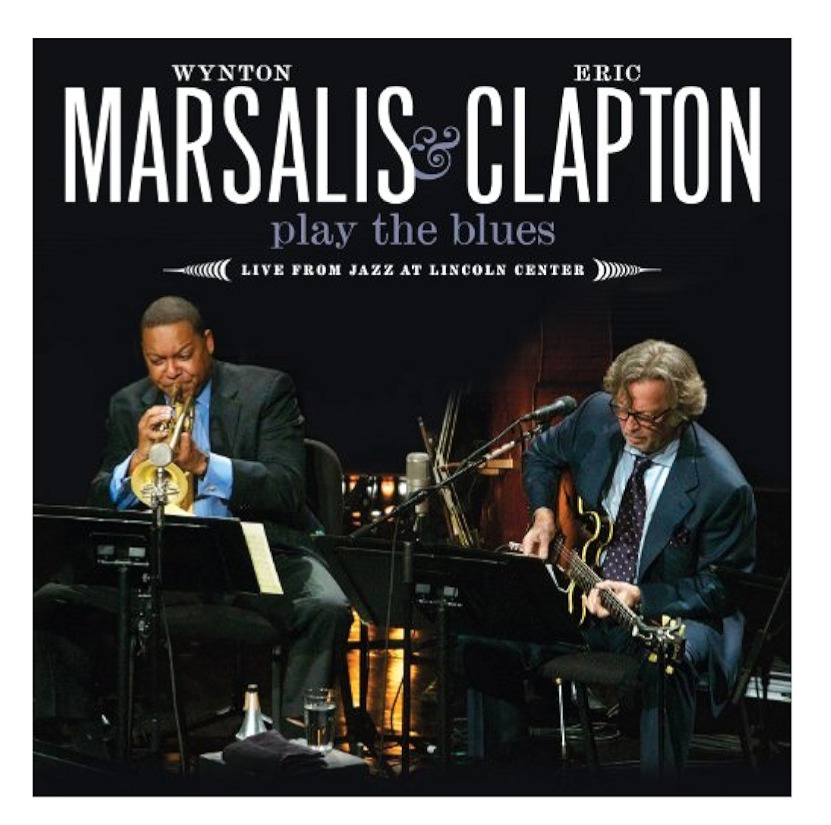
Wynton Marsalis and Eric Clapton, “Play the Blues: Live from Jazz at Lincoln Center”
The next recording was the very natural sounding Wynton Marsalis and Eric Clapton “Live From Jazz at Lincoln Center” and the first song, “Ice Cream”, was full, rich, yet very detailed, with generous micro detail present and a big open stage. Horns had their slight “bite” but was not punishing in any way, free of glare, yet not muted. There was good horn “throat” sound, the trombone had great “growl” and the trumpets were open, dynamic, and a superb sense of depth and instrumental separation. With so many instruments, a first and second trumpet, and guitar, things are at risk of sounding congested. Not so with the KT Mono amplifiers.
Track number 3 is “Joe Turners Blues” and the pace is slowed down. The vocals are well textured, natural sounding without any bite, sibilance, or hollow sound. There is “humanity” with the vocals and, thus, very believable. The black space between the instruments is generous, individual instruments are not smeared together, and they are very focused. The sound is much like “live music”, and if you strive for reproducing live music in your home, these amps will take you in that direction. Some may prefer more “tube” sounding amplifiers, and these do have the “tube sound” but not to the “darker” coloration sense. Each tube change yields a different sound. I feel the KT 88-98 is an excellent choice and provides a tremendous level of resolution and tonal balance. I tried the KT 150, and they too were very good. They were a little more dynamic, with little more slam in the bass. But I missed a bit of the warmth that the KT 88-98 provided. I would recommend trying both and see which tube matches with your loudspeakers best. Both tubes, KT150 and KT88/98 have a different plate impedance so it is only natural they sound different.
One can experiment with rolling the other tubes, and I did. Even with Valvo, GE 7025, Mullard, Telefunken and Heerlen Bugle Boys, the stock tubes were so well circuit-matched, it would be hard to tell every new owner to go and buy Telefunkens, Amperex or other famous tubes unless you just want to go down that path. When an amplifier is as well thought out from input to output as these are, using the recipe the manufacturer has designed is key to maximizing the performance.
This amplifier has a small footprint, but is mighty in sound. The transformers are of superb quality. Mike is known for his love of quality iron, and the sound supports this design goal as well.
I will take a slight detour and discuss the tubes, which were rolled only because I know there are a lot of “tube rollers” out there in tube land. With the price of tubes these days, narrowing the search can help sometimes, even though I know many audiophiles have their “tube stash” for new gear. After listening to the tube options, I recruited an audio buddy, Ted (Turn it up Ted), to participate in a few evenings of tube rolling and see how often we would agree on the tube benefits and weaknesses. We only used the KT150 tubes, so the interaction is limited to this combination.
Ironically, we had remarkably similar preferences. I was surprised as Ted listens to more metal than I do and plays music a bit louder. If Ted has a doubt about the volume, the solution is almost always “turn it up” so that we agreed on nearly all the tubes rolled was a surprise. In addition, he had to “blind listen” to the tubes. Ted will be commenting on his perspective with “Ted’s Take” on tube rolling with the Quicksilver KT Mono amplifier momentarily. The old advice that one tube may sound great in one system, but bad in another, was certainly experienced.
An example is the highly regarded Valvo; it was loaded with detail, but was just too much of a good thing on the Quicksilver Mono amplifiers. There was more detail than real music, but it was a magical tube in my other tube amp with 6550 Winged C output tubes. The rest had various degrees of magic, with the Amperex doing what they are famous for: making great music. All the tubes had some level of impact or “flavor” added or subtracted from the music, so personal preference is a big factor here. Think of tube rolling as a method to fine-tune your sound.
“Ted’s Take” on the tube rolling experience.
“What is the best part of a tube rolling session? Listening to great music, even repeating the best tracks with a friend, enjoying how well a glass of aged wine complements even the worst tube, watching your friend burn his fingers in his eagerness to move to the next set of tubes, or marveling endlessly at the industrial design of the tube boxes from the 1950s and 1960s.
They were pure art. What the heck happened to tube box design?
Anyway, for me, the best part was two things. One, being gob-smacked about how much changing one tube per amp could alter the sound. Undoubtedly, part of this was due to the resolving power of the system being listened to. The list of associated equipment is elsewhere in this article, so suffice it to say the tubes being rolled were two 12AX7 input tubes, one each in a pair of Quicksilver KT Mono Amplifiers. And the other “best thing” was the blind listening and NOT choosing the most expensive tubes as the best sounding (spoiler alert … they were actually my least favorite tubes).
A variety of tunes were spun during this session via either a VPI turntable or a high-resolution Sony DVD player. Music ranged from Knopfler and Emmylou Harris, “All the Road Running,” “America,” to Diana Krall, and David Gilmour – a good range.
All right, so how did the evaluation of the tubes go down? Like this … but again, the tubes used were not revealed until after listening:
Valvo Slant Getter. I called these the big buck tubes ($300.00 pr). I thought they had incredible detail and clarity. Cymbal hits were about as good as I have ever heard. Female voices were realistic, and Emmylou sounded more angelic than ever. Lower bass was strong, but I felt there was a “hole” in the music. The mid-bass was not very well developed. There was little emphasis and bloom in this region. Male voices seemed thin. I felt like I had to lean in to try and capture what was missing, but it was to no avail. The gap in the sound made listening not relaxing. I was shocked to learn these were the most expensive tubes of the test. For this system and setup, I would pass. They’d probably be fantastic in a different system.
The following tube was a Mullard from Great Britain. It was a relief after the somewhat etched Valvo, but for good or bad, it was a forgettable tube and sound. Compared to the previous Valvo Slant Getter, it was warmer. The mid bass made an appearance now, but the lowest bass receded a bit. An easy, listenable sound, but not very engaging.
Next up were the Russian Mullard CV4004 stock tubes. This was better. Less detail, sure, but a more fully rounded sound and no hole. I could live with these tubes. They did nothing wrong, but also did not do anything outstandingly well. Just solid-sounding tubes. Maybe it was not terribly surprising, but these sounded similar to the Mullard 12AX7 tubes from Great Britain, and it was six of one and half dozen of the other – between the two. Best to go with what is available and less expensive.
The next tubes just smoked me, the Amperex Bugle Boy tubes. I was not prepared for this degree of difference. Unlike the Mullards, which did everything very nicely, these tubes did everything exceptionally well. Darn, the guitars sounded like musical instruments instead of a copy of a guitar. What a fantastic sound stage, wide and deep, and “Yeah, I am a sound stage freak,” and these delivered. Powerful low end, both the low bass and the mid bass. Very lifelike male and female voices. These tubes simply had no weaknesses. Sign me up for these. Now I wonder what they would sound like in my McIntosh C2200? I do not want to know because they are not inexpensive tubes, and I’d need four of them.
Back down the mountain. Next up were some GE NOS tubes. These sounded pleasant. To me, they sounded like really good, solid state. Like a Bryston amp. Powerful, very smooth, somewhat smaller soundstage. Closer to the Russian Mullard tubes but a bit softer, in a good way.
Then the next set of tubes were put in the Quicksilvers, and I said, [I can’t tell you exactly why, but I really like the sound of these].” Well, turns out they too were Amperex, only Orange Globe tubes now. We did not do a back-to-back comparison of the two Amperex tubes, so it’s a bit disingenuous of me to choose one over the other. They had much more in common than they had in differences. I would be a “happy bugle boy” with either. Amazing tubes.
Telefunken Smooth Grey Plates were the most “tubey” sounding of the bunch. A more classic or vintage tube sound. Warm and very pleasant but in no way overly so. I could listen to these for hours, and they were my second favorite. The least fatiguing sound while still delivering good detail.
What really opened my eyes is that I have done a bit of tube rolling in the past (with a Conrad Johnson PV 10), but now I realize the reason I never heard any significant differences because my system was not up to the level needed to delineate the distinctions. This session, with a very resolving system, was another story. One of my takeaways was that the Quicksilver amps are incredibly revealing and neutral. They just present what the signal and input tubes are delivering. Very slick.
At the end, my friend switched up an RCA cable, and I’ll be ******, the sound really degraded with what was still a very high-quality cable, just not a fantastic cable. So now I not only have to accept how much difference tubes can make, but I will have to start paying more attention (and yes, more money too) to cables. **** hobby.
I will leave you with my ranking:
- Tie between the Amperex Bugle Boy tubes and the Amperex Orange Globe
- Telefunken Smooth Grey Plates
- GE tubes
- Tie Mullard CV4004 and Mullard from Great Britain
- Valvo Slant Getter
Turn it Up
-Ted Klauber”
I was very surprised how much my impression and Ted’s aligned, and that he was “blind tested” as I did not want to “taint” objectivity with any suggestions. We differed slightly on some minor aspects, which may have been more of a difference for adjective preference than overall impressions of sound.
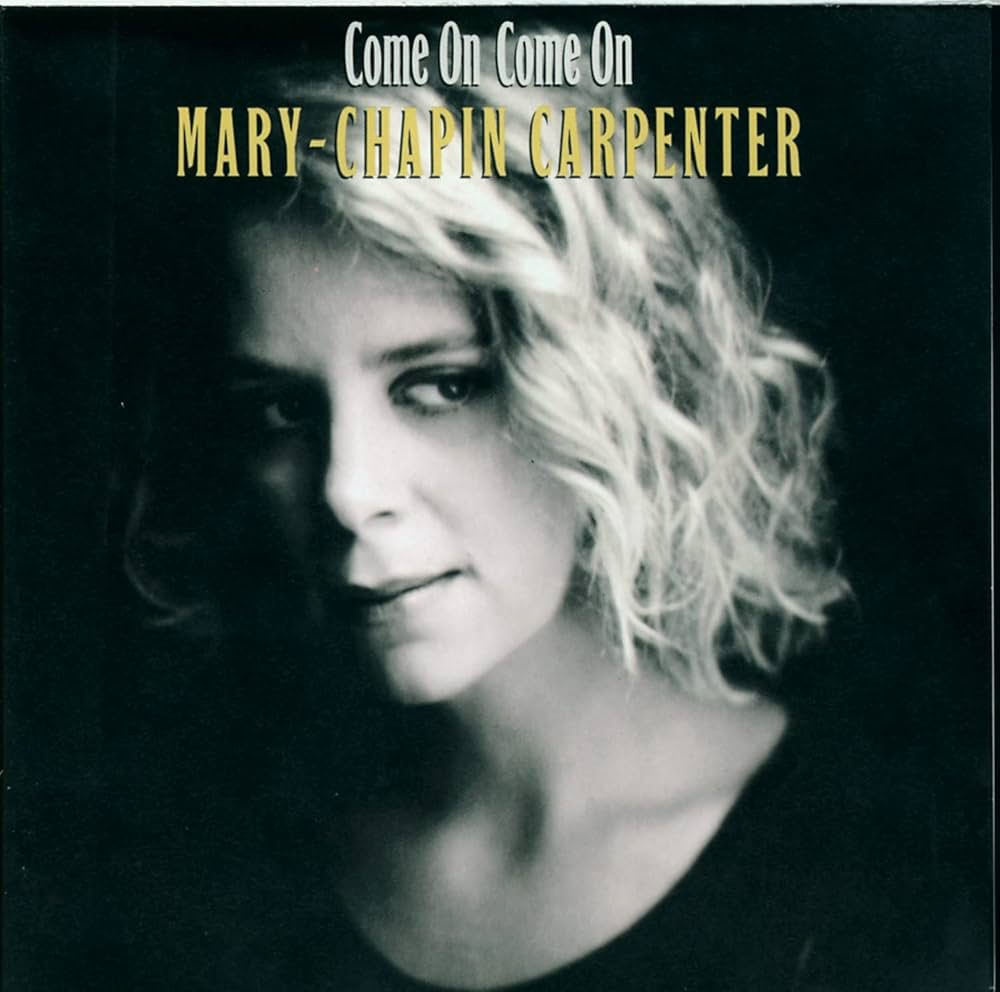
Mary Chapin Carpenter, “Come On Come On”
Following the “tube rolling,” the natural thing to have is a shootout with a vintage Quicksilver M135 and ASL Hurricane tube muscle amp.
I next listened to Mary Chapin Carpenter and the Quicksilver KT Mono amplifiers really started to rock. The album “Come On Come On” (Released 1992) by Mary Chapin Carpenter, had great slam, dynamics, in “He Thinks He’ll Keep Her” and a good foundation of rhythm with the drums and bass guitar controlling the bottom end nicely, with clean articulation and punch. The midrange was marvelous. Her voice was pristine with adequate body, clarity, no trace of sibilance and generous “black space” around her vocals.
On the track “I Feel Lucky” there was the “playful” rhythm and vocals sounding very present and believable with superb dynamic swings. The piano fills were very clean and not lost in the mix.
On the more delicate ballad duet “Not Too Much to Ask” there was a clear, focused stage with Mary Chapin on the left side of the mic from the listener position with guest artist, Joe Diffy, on the right side of the mic (the M135 had more fullness and bloom while the KT Mono had better separation, less, but adequate body). By this time, I was so completely impressed by how much music was coming out of the Quicksilver KT mono amps, I decided now was the time to expand even beyond the “tube rolling” and bring in some tube muscle.
The next thing to try is how the Quicksilver KT Mono would sound with a very nasty load, using a notoriously difficult-to-drive speaker like Ted’s B&W 801 Nautilus. They are power hungry, have a reputation for clipping amplifiers and he was driving them with the ASL Hurricanes, a “blast from the past” with 200wpc, in pentode mode, 100wpc in triode mode, utilizing (8) KT88 tubes for each amp. In addition, we also included the Quicksilver M135 amplifiers with (6) EL34 tubes each, 135wpc. (Note that the M135 is a marvelous match with B&W 801 Nautilus. Ted would not let them leave his house). Yes, this seems unfair, but we like to do difficult tests and comparisons.
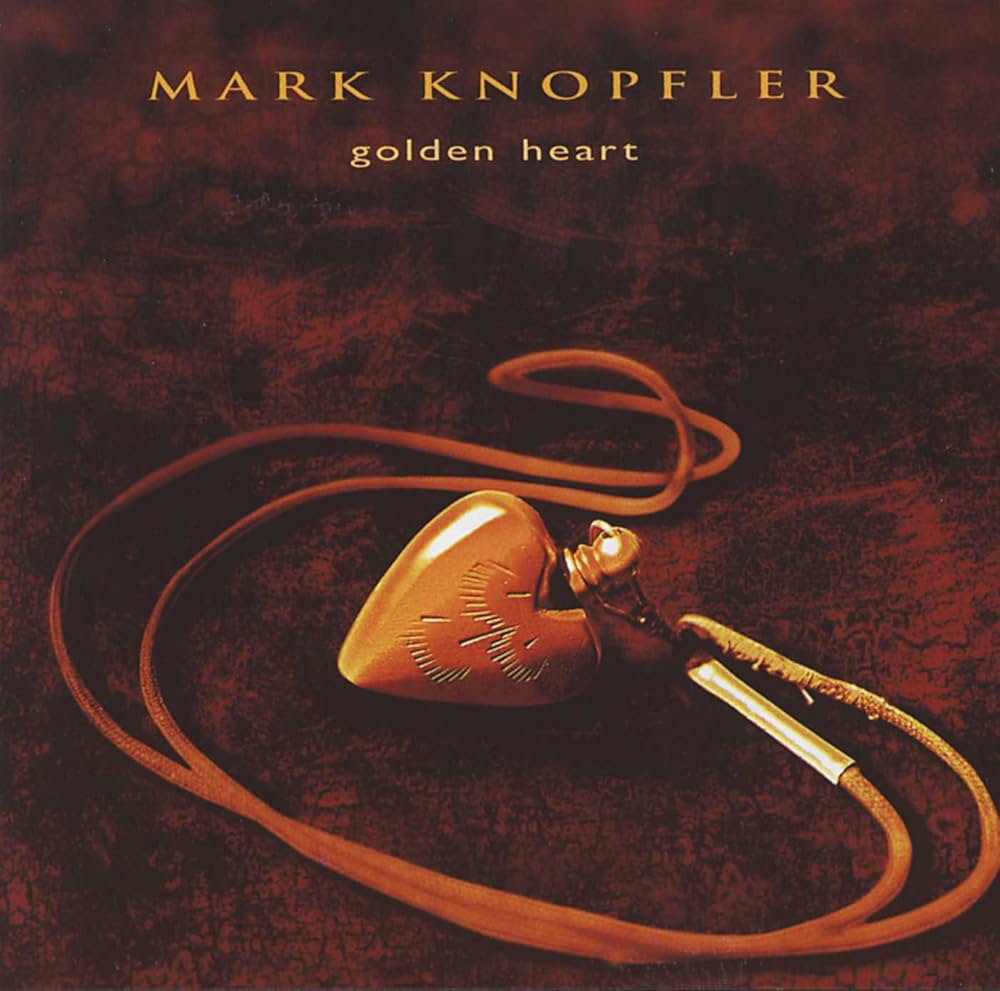
Mark Knopfler, “Golden Heart”
Two recordings were used after the amps were past the warm-up part of listening. Mark Knopfler’s “Golden Heart” and the title track, number 3, “Golden Heart” was played through all 3 amps. First up is the Quicksilver M135, as this is historically, along with the V4, two of his (Mike Sanders) finest amplifiers ever made, IMHO. The M135 was great in nearly every regard, but in comparison to the KT Mono amplifiers, they had less articulation, slower, and hung onto the bass a bit longer; but the midrange was fuller with more bloom, perhaps deeper in the stage, and the top end was slightly less pristine. But the M135 presented a bigger stage.
The ASL Hurricanes had the biggest bass, the most slam, but unfortunately seemed poorly controlled. Both the KT Mono and M135 were ultimately preferable. In addition, the midrange was recessed and the top end and bass were forward. Despite these issues, they were still great sounding amplifiers. However, I preferred the KT Mono amplifiers, even with a slightly smaller stage size as they were more organized within their stage. The speed of the KT Mono amplifiers had a more musically involving presentation and were better at “releasing the note” and preserving the pace of music. The M135 captured all the full, rich vocals of Mark Knopfler, with the M135 the richest then the KT Mono. However, the KT Mono had a more focused and better clarity of vocals. The Hurricanes were last. The ASL Hurricanes would have made a better Heavy Metal amplifier than the other two amplifiers with a big, less focused stage.
Next was Mary Chapin Carpenter “Come On, Come On” and the same things were heard. Overall, the Quicksilver amps won the day. The KT Mono and M135 both have a “Quicksilver House Sound” with the M135 being more rich, full, slightly less articulate, slower sounding, and less pristine top end with a very large stage. The M135 are still world class amplifiers. The KT Mono Quicksilver KT Mono amps were just shockingly good in the comparison with their neutrality and agility. When you are working with only 2 output tubes per amp, the odds drop of keeping up with the tube muscle amps. I did not expect them to keep up, much less sound better in this area. Mike Sanders has done it again and made a very versatile amplifier to appeal to many music lovers. Some will prefer the M135, for their rich, beautiful texture. They have not been made in years and can be hard to find. After all, he only made 100 pairs. Good luck finding them! The KT Monos have their own list of attributes.
Ultimately, the Quicksilver KT Mono amplifiers are very transparent and musical if that is what you are seeking. If you want colors, these amps can do that too if you just select the tubes, and cables with the colors you want in your system. In comparison with other tube amplifiers, I have heard in this sub 10k range, the Quicksilver KT Mono, if properly speaker-matched, is competitive with many in the 10-20k range. Some may do a few things better, but some things worse. In the 20k and over price point, the Quicksilver KT Mono amplifiers provide a very competitive option for the reproduction of music when the price or musicality is considered. Ultimately, the best system-matching amplifier is most important, and the listening time needed to find the ideal amplifier for your speakers, system, and room. For those who want more power than the 100wpc with the KT 150, buy four amplifiers.
For my final listen to the KT Mono Quicksilver amplifiers, I went back to where it all began. The Quicksilver KT Mono amplifiers with a pair of Vandersteen 2Ci, from 1989-1991 at Ted’s place. These were the speakers I heard the Quicksilver Mono amplifiers sing with years ago at Greg Belemjian’s Musical Images in Fresno. A speaker over 30 years young has still “got it” with the Quicksilver KT Mono amplifiers. They were doing things his B&W 801 speakers were not doing. No, the 801 speakers were not kicked to the curb, but the musicality of the 2ci were very evident. They were more coherent and loaded the room better. The 801 Nautilus can overwhelm a room. The Vandersteen 2C line of speakers are legendary for a reason. The Quicksilver KT Mono will work with many different speakers, and only an audition is needed to see if they fit.
The Quicksilver KT Mono Amplifiers are an easy “Highly Recommended” product.
Secrets Sponsor
Figure 1 below shows the spectrum for a 1 kHz sine wave, 500 mV input into 8 Ohms (all of the tests were with an 8 Ohm load). The output was 10.8 Volts (about 15 watts). There are a lot of distortion peaks, but the total distortion is only 0.17%. This kind of spectrum is not unusual for a tube amplifier, and it produces a characteristic “musical” tonality. Notice that the 2nd-ordered harmonic is the largest, again, giving the amplifier a “warm” sound.
IMD is shown in Figure 2. With the same 500 mV input, the output is less than it was with the single 1 kHz test signal in Figure 1 (this is normal). IMD is 0.58%.
Figure 3 has a 19 kHz and 20 kHz sine wave at 500 mV input. You can see that there are many side peaks and their harmonics. This could suggest a congested sound, but I did not do the subjective listening tests.
Frequency Response is flat to 7 kHz, and down 0.25 dB at 20 kHz.
THD+N vs. Frequency is shown in Figure 5. It’s high in the low frequencies but flattens out at about 60 Hz and is relatively steady at the remainder of the audible band at 0.1%.
THD+N vs. Power Output (Figure 6) shows that, in a typical listening level of 10 – 15 watts, distortion is at 0.1%. The amplifier reaches 1% distortion at 85 watts.
Summary:
The Quicksilver KT Mono Power Amplifier has more distortion than a solid-state amplifier, but it is rich in 2nd-ordered harmonics, which is what tube aficionados like.
If you are a lover of tube-based amplification, the Quicksilver KT Mono power amplifiers are definitely worth an audition, along with your undivided attention.
- Compact size
- High Power
- Diverse speaker load flexibility
- Neutral
- Easy power on/off with no pops
- High quality parts
- Low Noise
- Point to point wiring
- No circuit boards
- Long Tube life
- Binding posts with a wrench fitting
- An optional cage for homes with pets or small children
- A small meter on the amp for setting the tubes voltage
- Taller feet under the amp
The Quicksilver KT Mono represent sophistication with simplicity, high value, neutrality, flexibility, and a very high sense of musical integrity and authenticity if your power needs are close to the output of the Quicksilver KT Mono Amplifiers. The choice between KT88 and KT 150 tubes offers you two options and the slightly warmer sound of the KT88 may appeal to some, and others may prefer the KT 150’s more incisive, dynamic yet, refined sound. Both options are wonderful in their own way. I encourage you to audition a pair of the Quicksilver KT Mono amplifiers if you are still undecided for your amplifier choice. The Quicksilver KT Mono amplifiers represent very good value.


